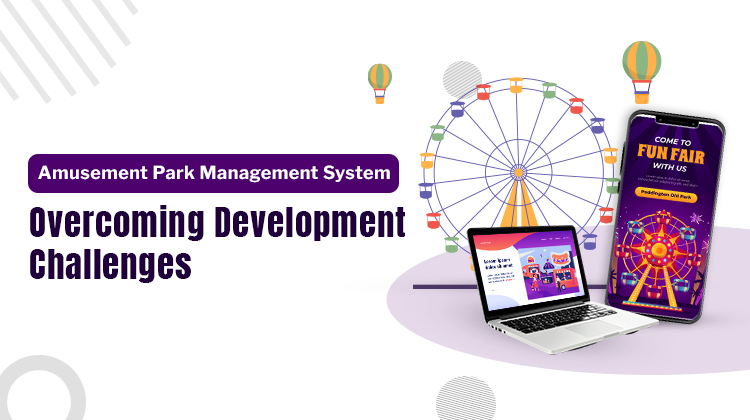
18 Feb, 2025
Amusement parks are among the most dynamic entertainment destinations, drawing thousands of visitors daily. Managing such a large-scale operation requires an efficient system that oversees ticketing, rides, crowd control, security, and revenue tracking. A well-designed Amusement Park Management System ensures seamless operations, enhances visitor experiences, and maximizes profitability.
However, developing a scalable and efficient amusement park management software presents numerous challenges. From integrating multiple functionalities to ensuring top-tier security and real-time data synchronization, the complexity of these systems requires innovative technological solutions.
In this article, we will explore the key challenges in developing theme park management software, real-world examples, market trends, and how modern solutions can optimize operations, ensuring a seamless experience for both visitors and park operators.
Key Challenges in Developing an Amusement Park Management System
Developing an amusement park management system presents a variety of technical and operational challenges. Let’s explore the core problem areas and innovative solutions that can help create a seamless experience for park visitors and management teams.
1. Managing Visitor Flow Efficiently
Large crowds, especially during peak hours, can lead to congestion, long wait times, and decreased customer satisfaction. The system must efficiently handle real-time visitor tracking, queue management, and ride scheduling to ensure smooth operations.
Solution: AI-powered theme park management systems can optimize visitor flow through predictive analytics. Mobile apps providing real-time wait-time alerts and virtual queue bookings can enhance the guest experience and reduce congestion.
Real-World Example: Disney’s Genie+ system utilizes AI-driven queue management, reducing wait times by 30%, improving visitor satisfaction, and increasing ride throughput.
2. Integrating Seamless Ticketing & Access Control
A robust amusement park management software should support multiple payment methods, digital wallets, and online bookings while preventing ticket fraud and bottlenecks at entrances.
Solution: Cloud-based ticketing systems with QR code scanning, RFID wristbands, and biometric authentication can significantly enhance access control, reducing manual verification errors and eliminating fraud risks.
Market Trend: According to Statista, the global contactless payment market is expected to surpass $100 billion by 2025, highlighting the need for digital and automated ticketing solutions in amusement parks.
3. Unifying Multiple Revenue Streams
Revenue in amusement parks comes from various sources, including ticket sales, food & beverages, merchandise, parking, and VIP services. A theme park management software should seamlessly integrate all revenue streams while maintaining accurate financial tracking.
Solution: A centralized POS (Point of Sale) system integrated with real-time analytics and inventory management can help park operators track revenue across multiple sources. Popular solutions like Square, Clover, or Toast POS provide automated reconciliation and seamless accounting integration.
4. Ensuring Data Security & Regulatory Compliance
Amusement parks handle vast amounts of customer data, payment information, and operational insights. Data security threats, cyberattacks, and regulatory compliance add further complexity.
Solution: Implementing strong encryption protocols, multi-factor authentication, and role-based access control can enhance security. Conducting regular security audits and leveraging real-time threat detection tools ensures compliance with industry regulations like GDPR and PCI DSS.
Industry Example: Many theme parks, such as Universal Studios, use advanced encryption protocols and AI-driven threat detection to prevent data breaches and ensure compliance with global data privacy laws.
5. Real-Time Ride & Facility Management
Monitoring ride availability, maintenance schedules, and safety checks in real time is critical. IoT-based sensors must be integrated into the theme park management system to track ride performance and prevent unexpected downtimes.
Solution: IoT-enabled amusement park management software with automated alerts for maintenance, AI-driven predictive analytics, and digital twins for virtual ride simulations can enhance ride safety and operational efficiency.
Clarification: A digital twin is a virtual replica of a ride, allowing engineers to test safety measures before physical implementation, reducing downtime and improving maintenance efficiency.
6. Enhancing Guest Experience with Personalization & Loyalty Programs
Delivering personalized experiences enhances customer satisfaction and boosts repeat visits. However, implementing AI-driven recommendations and loyalty programs within an amusement park management software is challenging due to data silos and integration complexities.
Solution: AI-powered recommendation engines and gamified loyalty programs can provide customized visitor experiences. Mobile apps offering personalized itineraries and rewards programs based on visitor behavior can drive engagement and customer retention.
Real-World Example: Six Flags uses AI-driven loyalty programs that offer discounts, exclusive ride access, and customized itineraries based on visitors’ past interactions, enhancing customer satisfaction and revenue generation.
7. Workforce Management & Staff Scheduling
Handling large amusement park staff, including ride operators, security personnel, cleaning staff, and entertainers, requires a smart workforce management system to streamline scheduling and payroll processing.
Solution: AI-driven workforce management systems with automated scheduling, attendance tracking, and mobile notifications for employees ensure better workforce efficiency and reduce administrative workload.
8. Achieving Scalability & High Performance
A major challenge in developing an amusement park management system is ensuring scalability. The system must handle high traffic during peak seasons while remaining cost-effective during off-peak times.
Solution: Cloud-based solutions with auto-scaling capabilities allow seamless expansion during high traffic periods while reducing operational costs during slow seasons. Edge computing can further enhance real-time data processing, ensuring faster response times.
Clarification: Edge computing refers to processing data closer to the source (e.g., on-site servers) rather than relying solely on cloud servers, ensuring faster response times and reduced latency.
Conclusion
Developing a scalable Amusement Park Management System requires overcoming challenges related to visitor management, ticketing, security, revenue tracking, and workforce optimization. By integrating AI, IoT, cloud computing, and predictive analytics, amusement park operators can streamline operations, enhance visitor experiences, and maximize profitability.
If you are looking for a proven, scalable amusement park management software solution, Idiosys Tech offers industry-leading expertise in delivering custom-built, AI-powered solutions tailored to your park’s needs.
Get in touch with our experts today to explore how we can help optimize your amusement park’s operations with cutting-edge technology!
__________________________________________________
What are the key features of an amusement park management system?
Essential features include online ticket booking, RFID-based access control, queue management, real-time crowd monitoring, mobile payments, and digital park maps.
What are the biggest challenges in developing an amusement park management system?
Challenges include integrating multiple systems (ticketing, security, payments), managing real-time data, ensuring scalability, and providing a seamless user experience.
How does an amusement park management system improve visitor experience?
By offering fast online check-ins, virtual queue systems, real-time ride availability updates, mobile payments, and AI-driven personalization to enhance convenience.
How can an amusement park management system handle emergency situations?
Integrating automated alert systems, AI-powered crowd evacuation plans, live monitoring through CCTV, and real-time staff communication tools ensures better safety management.
How long does it take to develop an amusement park management system?
A basic system takes 4-6 months, while a feature-rich solution with AI, IoT, and cloud-based analytics may take 9-12 months for full deployment.
__________________________________________________
You May Also Read
Fantasy Sports App Development: Overcoming Technical Challenges
On-Demand Laundry App Development: Key Features & Challenges to Overcome

